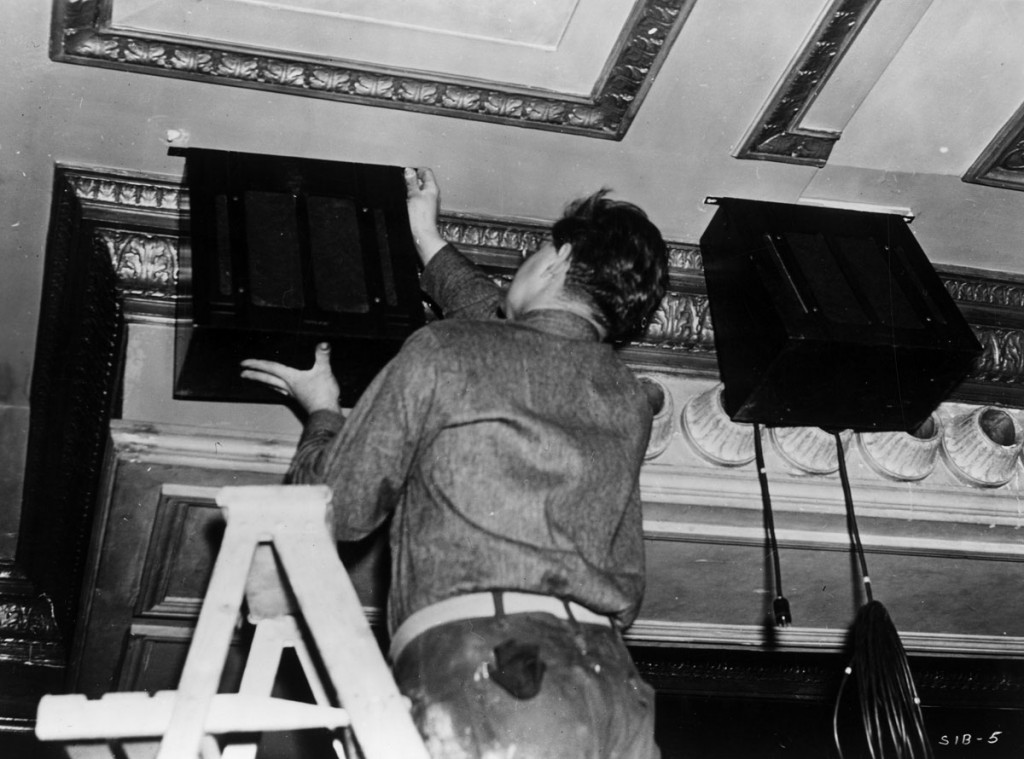Fantasound: How Disney Brought Stereophonic Sound to the Big Screen
During his life, Walt Disney was many things: a dreamer, entrepreneur, architect and innovator. Always looking to push the boundaries of family entertainment, Disney and his staff often had to create new forms of technology. As LaughingPlace.com celebrates the 75th anniversary of Fantasia, let’s take a closer look at one of Walt Disney’s lesser touted technological innovations – Fantasound, the birth of stereophonic systems.
Fantasia was unlike anything ever done before in the cinematic medium. Walt Disney’s carefully selected musical pieces and accompanying visuals were intended to create a unique symphonic experience for the general public. Walt Disney knew, however, that merely experience the music visually was not satisfactory. Disney wanted audiences to experience the mastery of a full orchestra when viewing his masterpiece Fantasia. The normal one speaker behind the conventional movie screen would not produce the full, breath taking sound he was after. Like being in a superb concert hall, Disney wanted the music to surround the audience.
Unfortunately, the more Disney researched this specific sound possibility, the more Disney realized the conventional one channel approach to sound would not meet his expectations. Disney and his engineers found the one channel recording and play back system had several deficiencies. The volume range was limited, source of sound was limited, and there was fixed localization of the sound source at the center of the screen. Anyone who has had the pleasure of experience live orchestral music can clearly see why such limitation would cause extreme dissatisfaction when trying to replicate the distinctive experience.
In order for the world to truly experience Fantasia per his vision, Disney knew that a new type of recording system needed to be invented. Such was the task given to Disney’s engineers. For months the men toiled with developing a system. In fact, many equipment combinations were explored both on paper and practically. Of the hundreds of systems designed on paper, only ten were built and tested. What developed and emerged from these think tank sessions was Fantasound, the world’s first stereophonic sound reproduction system.
Fantasound was much, much more than just speakers placed in different areas in the theater. Fantasound was an extremely intricate engineering phenomenon that consisted of a multi-track film phonographic system, optical system, tone rectifier and tone operated gain adjusting device. All of these systems had multiple other components. Prior to Fantasound, movies were filmed in monaural – essentially, one microphone recorded both the music and dialogue. With Fantasound, music was recorded with nine optical recorders that used eight music tracks plus a click track to assist in animation timing.
Only fourteen full Fantasound systems were installed throughout the country. They were added to theatres in New York, Los Angeles, Boston, Philadelphia, Chicago, Detroit, San Francisco, Baltimore, Washington, Minneapolis, Buffalo, Pittsburgh and Cleveland. Sadly, despite the spectacular sound reproduction, Fantasound met with a steady decline. In order to install all the equipment many movie houses had to remain closed for weeks, losing revenue while financing the expensive installation. Many movie houses just couldn’t fit all the necessary Fantasound equipment in their small projection rooms. However, it was the start of America’s involvement in World War II that sounded the final death bell on the Fantasound project. The national defense effort took precedence in the field of technological advancements, research and resources. The majority of the fourteen installs Fantasound units were dismantled and used for the war effort.
Fantasound is not truly lost as it paved the way for the eventual development of surround sound. So, next time you are at the movie theater or even watching a movie at home , keep in mind that even that amazing sound system was started by a mouse.



